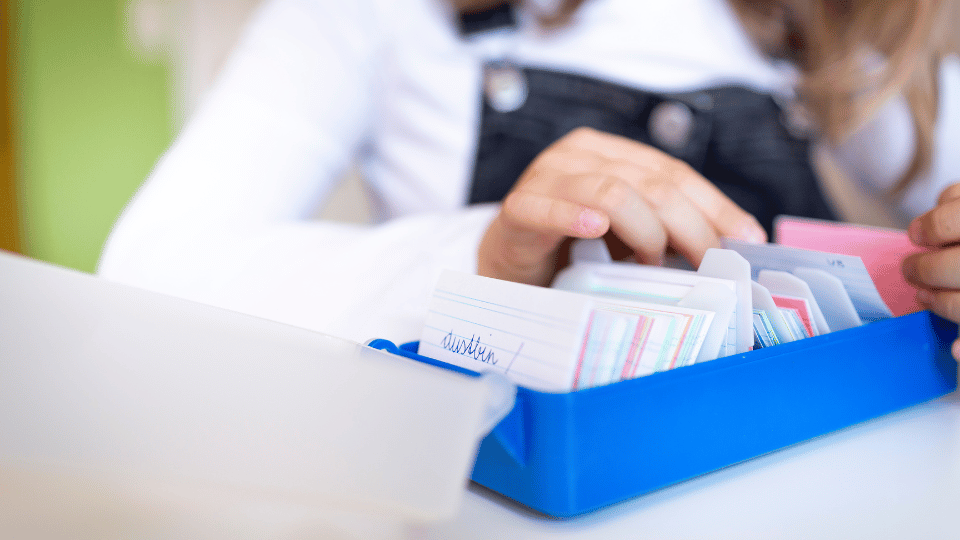In the fast-paced world of education, students and lifelong learners alike are constantly seeking effective study techniques and strategies to enhance their learning experience. Among the myriad of options available, flashcards have emerged as a popular and versatile method for mastering information.
This article delves into the multifaceted nature of flashcards, exploring their definition, benefits, and the science behind their effectiveness as a study aid. By understanding how it works and its various types, learners can harness their potential to improve retention and recall, making them an invaluable resource in any educational journey.
Flashcards are a versatile study tool designed to aid in memorization and information retention. Typically, they consist of small cards that feature a prompt or question on one side and the corresponding answer or information on the other. This two-sided format allows learners to test their knowledge actively, making this technique an effective method for reinforcing memory through repeated retrieval.

Flashcards enhances the learning process by promoting active recall, a cognitive strategy that encourages students to retrieve information from memory. This method not only aids in memorization but also strengthens neural connections, making it easier to access information in the future. By engaging both visual and auditory senses, this method stimulates the brain, creating a multi-sensory learning experience that can lead to better retention of information.
Moreover, flashcards allow for targeted learning, enabling students to focus on specific concepts or topics that require more attention. This efficiency is particularly beneficial during exam preparation, as it allows learners to maximize their study time by concentrating on areas where they may struggle. The repetitive nature of using flashcards reinforces knowledge through spaced repetition, a technique proven to enhance memory retention over time. As students create their own flashcards, they engage in a process of paraphrasing and generating examples, which further solidifies their understanding and encourages critical thinking.

The classic flashcards is the most recognizable type, featuring a simple design where one side displays a question or term, and the other side provides the answer or definition. This straightforward approach is effective for memorization and recall, making it a staple in educational settings.
Digital flashcards have revolutionized the way learners interact with study materials. Among these, learning flashcards are designed specifically for educational purposes, often incorporating spaced repetition algorithms to optimize retention.
Infographic flashcards combine visual elements with text, making complex information more digestible and appealing. They allows users to engage with the content through quizzes or games, while language flashcards focus on vocabulary acquisition, often featuring images alongside words to aid in language learning.
One of the most important tips is to keep each flashcard focused on a single idea or concept. This specificity not only aids in memory retention but also prevents cognitive overload, allowing learners to concentrate on one piece of information at a time.
Additionally, incorporating visuals such as images or diagrams can significantly enhance recall, as the brain often remembers pictures better than text alone. Combining words and images creates a more engaging learning experience, making the flashcard not just informative but also enjoyable to use.
Another key strategy is to utilize mnemonic devices to forge mental connections between concepts. This technique can be particularly useful for subjects that require memorization of complex information, such as vocabulary or historical dates.
Furthermore, employing the spaced repetition method can optimize the review process. By revisiting flashcards at increasing intervals, learners can reinforce their memory and improve long-term retention.
Lastly, personalizing your flashcards by using colors, drawings, or even humor can make studying more appealing and help maintaining motivation throughout the learning journey.
One of the most significant advantages is their ability to improve memory retention. By engaging in active recall, students are prompted to retrieve information from memory, which strengthens neural connections and enhances long-term retention. This method is far more effective than passive reading, as it encourages learners to actively engage with the material, leading to a deeper understanding and better recall during exams or discussions.

Another key benefit is their portability and cost-effectiveness. Unlike bulky textbooks or extensive study guides, flashcards can easily fit into a pocket or bag, allowing students to study on the go. This convenience means that learners can utilize their time more efficiently, whether they are commuting, waiting in line, or taking a break. Additionally, creating flashcard is an inexpensive method of studying, making them accessible to a wide range of learners without the need for costly resources.
One significant mistake is creating questions that are either too vague or overly complex. Flashcards should be straightforward and focused, allowing for quick recall of information. If the questions are not clear, it can lead to confusion and ineffective studying.
Additionally, many students fall into the trap of not learning the material before creating their flashcards. This can result in cards that lack depth and understanding, ultimately leading to rote memorization rather than true comprehension.
Another common error is relying too heavily on textbook definitions or dictionary-style explanations. While these can be useful, they often lack the context needed for deeper understanding. It’s essential to incorporate a variety of formats and examples in your flashcards to keep the learning process engaging.
Furthermore, avoid the mistake of focusing on trivial details that do not contribute to a broader understanding of the subject matter. Instead, prioritize key concepts and ideas that will be most beneficial for your overall learning objectives.
In conclusion, flashcards emerge as a powerful study tool that can significantly enhance learning and retention. Their versatility allows them to be used across various subjects and learning styles, supporting students of all ages in achieving greater academic success.